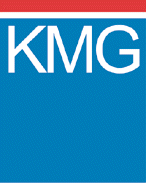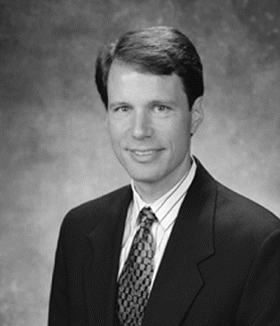|
|
|
|
|
CEOCFO CEOCFO Monthly Analyst |
"To print this page go to file and left click on print" KMG
Chemicals selling to stable clients and generating strong positive cash flow Bio of CFO, Mr. Sobchak: “KMG Chemicals is a manufacturer of niche
chemical products, serving focused markets, and has grown through acquisitions from its
inception about fifteen years ago. Our first acquisitions were in wood treating chemicals.
In 2001, we expanded into agricultural chemicals. We have since continued our focus for
growth through further acquisitions in agricultural chemicals and industrial
chemicals.” CEOCFOinterviews: In building out your product pipeline do you
incorporate R&D or is it strictly through acquisitions? Mr. Sobchak: “Strictly through acquisitions. We focus on what
we do best, and that is manufacturing, and managing stable markets. We are not product
developers, research scientists or market developers; our growth comes through acquiring
new product lines and bringing them under our management.” CEOCFOinterviews: Can you tell us about your management strategy,
and how you run each division? Mr. Sobchak: “Our key focus is to maintain an efficient
operation and low overhead; last year we generated over 2.6 million dollars of net income
with just ten people in headquarters. We always look for efficiency improvements in how we
operate. All of our production right now is centralized at our facility in Matamoros,
Mexico, just across the border from Texas. We have excellent plant management there as
well as highly skilled personnel.” CEOCFOinterviews: So you bring it all under the same roof? Mr. Sobchak: “To the extent that we can, we do. If we look at
acquiring facilities in other locations, then we would have to look at extending our
management team, but we don’t take personnel additions lightly.” CEOCFOinterviews: What would you say is your most recent and
exciting news? Mr. Sobchak: “The MSMA plant, which we relocated to our
Matamoros facility, was started-up in December 2001 in time to produce product for the
2002 cotton growing season. Its been
producing according to all specifications, and on schedule which says a lot for our
operations people. About the same time, our
facility also won a Clean Plant Award from the Federal Agency for Environmental Protection
in Mexico. Only 12 out of 165 eligible plants
have won this award since its inception in 1997.” CEOCFOinterviews: Do most of your acquisitions come from the U.S.
or abroad? Mr. Sobchak: “Generally speaking, we look at the U.S.,
however, our growth strategy to be a player in the agricultural chemicals market; mandates
that we expand into Europe and South America. We currently sell into those markets, and
one of our key suppliers is in Europe. However, at the present, we don’t have any
manufacturing facilities outside of North America.” CEOCFOinterviews: Do most of your revenues come from the U.S. or
abroad? Mr. Sobchak: “Most of our revenues are from the United
States.” CEOCFOinterviews: What market place considerations do you look at
when deciding on an acquisition? Mr. Sobchak: “Our strategy is to acquire products that have
fully developed markets. However, there is up-side to some of the products we acquired,
particularly for our latest acquisition, the agricultural herbicide Bueno 6® (MSMA). There are markets for MSMA in South America that may provide
some growth opportunities. Therefore, we are in the process of obtaining registrations
from five South American countries, and hope to be selling product there for the next
growing season.” CEOCFOinterviews: Which product area generates the most significant
revenues for you? Mr. Sobchak: “Wood treating chemicals.” CEOCFOinterviews: Will that continue into the future or do you see
that changing? Mr. Sobchak: “For the time being, wood treating chemicals
should continue to generate our most significant revenues. However, the nice thing about
being a micro-cap company is that one acquisition can have a significant impact on the
company. I can easily see a future acquisition pushing wood treating chemicals into the
number two spot.” CEOCFOinterviews: How big is the wood treating market place and
where are you positioned currently? Mr. Sobchak: “There are three products that we sell into the
wood treating market, the first product that we had acquired was pentachlorophenol (penta), and that is used on utility poles. There are two producers of penta that are licensed to sell the product in the USA, KMG being one.
The second wood treating product is creosote. We are actually a distributor of creosote,
we don’t manufacture it. It has been
around for over one hundred years; and is used to treat railroad ties, construction timbers and pilings. In North America, there are two major distributors of creosote, our company and another. CEOCFOinterviews: What differentiates you from your competitors and
gives you an edge? Mr. Sobchak: “What differentiates us is customer
relationships, location and distribution channels. We are a low cost producer, and when I
look at bench marking us in terms of earnings or cash flow per employee; there really is
no other chemical company that comes close to us. We are very efficient in our operation. CEOCFOinterviews: Can you tell us about your earnings for the third
quarter? Mr. Sobchak: “Our third quarter ended on April 30th (2002).
The third quarter revenues increased to 8.8 million dollars vs. 8.1 for the third quarter
of last year. Earnings for the quarter were
799 thousand dollars or about 11 cents per share. That
is up from about 3 cents a share for earnings in the third quarter of 2001; a significant
increase.” CEOCFOinterviews: What were the factors that contributed to that
increase? Mr. Sobchak: “There has been a fundamental improvement in
certain wood treating chemical markets that we serve. We have continued to work hard at
controlling our costs to be a low-cost producer. Also,
the new MSMA plant that went operational in December of 2001 has favorably impacted our
profitability.” CEOCFOinterviews: What is the outlook for the coming year? Mr. Sobchak: “We are optimistic about our acquisition program. We are seeing continued improvement in some of our
core products. With regard to our agricultural product MSMA, we are looking forward to
expanding the markets for that product into South America.” CEOCFOinterviews: Do you have the cash and/or credit to go forward
with your acquisition strategy to build out your business? Mr. Sobchak: “Yes we do.
During the ‘hay days’ of the market, in the not too distant past,
we didn’t see many opportunities to acquire businesses at attractive multiples. During that time, in the absence of attractive
acquisition opportunities, we just paid down debt and waited for the cycle to turn around.
As a result, long-term debt now represents only 3.3% of our total assets and we are well
positioned for our next acquisition. CEOCFOinterviews: Can you give us a picture of your sales model? Mr. Sobchak: “We manufacture chemicals at our Matamoros,
Mexico facility. We generally sell to large distributors. Our preferred model is to sell
to master distributors or industrial users. We try to focus on what we are good at; and
developing brand names and maintaining that kind of brand awareness is not what we do.
Therefore, we rely on professional marketers and distributors to handle that end of the
business.” CEOCFOinterviews: In closing, what would you like to say to your
current shareholders as well as to future investors who will see your story? Mr. Sobchak: “I would like them to keep in mind the profitability of our core business. We are selling chemicals that have been around for decades, in some cases over a hundred, years. We are selling to stable clients and generating strong positive cash flow with these products. Further, there is a vast opportunity to expand the business by acquiring other products like these. It is a contrarian strategy because we are buying product lines that although they are profitable, the large chemical companies no longer find strategic. However, often times, these kinds of contrarian strategies prove to be quite lucrative.”disclaimers |


